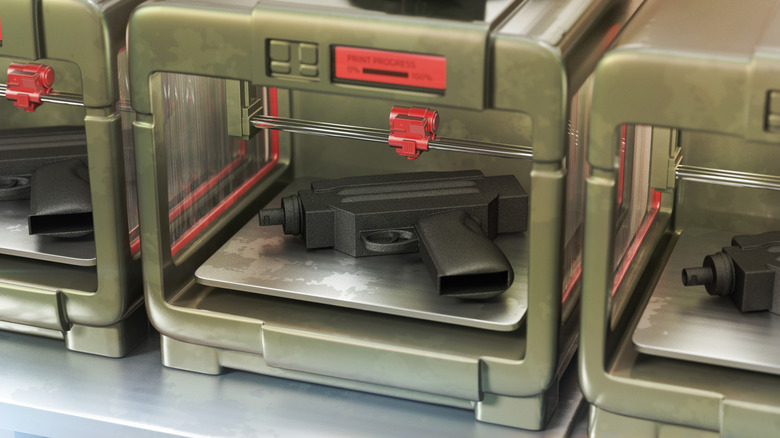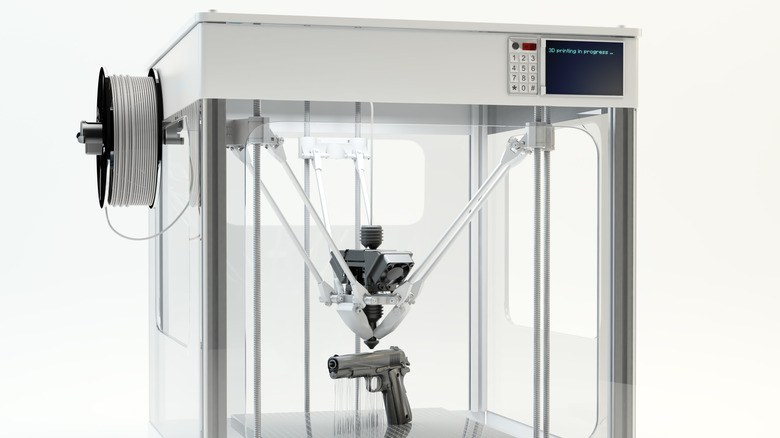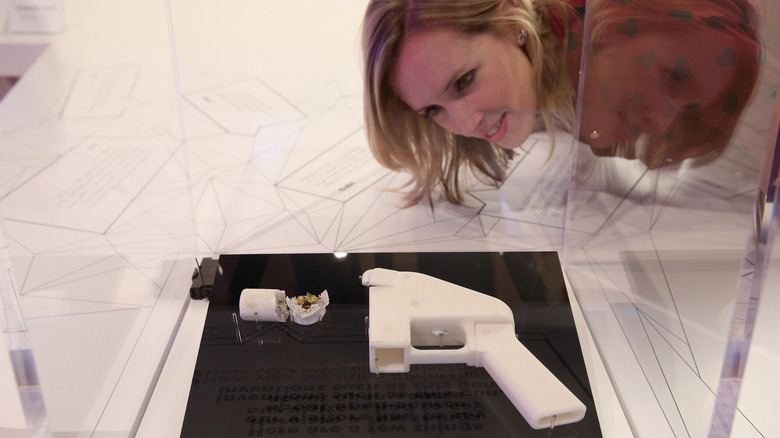Why 3D Printing Certain Things Can Land You In Hot Water With The Law
The killing of UnitedHealthcare CEO Brian Thompson in 2024 sent shockwaves through the public, but one of the most intriguing aspects of the incident was the weapon used to commit the crime. It was a 3D-printed gun without any traceable serial number, and it was inspired by a fairly popular "ghost gun," FMDA 19.2, which stands for "Free Men Don't Ask." The horrific incident also stirred yet another debate around the limits of 3D printing and what is permissible. The rules, well, they are a tad complicated.
In the realm of industrial processes and medical science, 3D printing is arguably one of the most promising advancements in recent decades. The tech trickled down from labs and production facilities and reached a stage where an average enthusiast can now buy a versatile 3D printer for just a few hundred dollars and print whatever they want. However, it's not a total Wild West out there, and 3D printing certain items in your basement can land you in serious legal trouble.
Over the past few years, as 3D printers slowly entered the mainstream of consumer electronics, numerous reports have documented individuals printing revolvers, rifles, and railguns capable of launching even metal projectiles. Depending on the local regulations, a few have even landed in prison for the offense. Then there's the risk posed by compact CNC machines that can produce untraceable "ghost guns" and unregulated medical items. They also have the capability to print sophisticated disguises for hazardous items disguised as everyday products.
What product categories can land you in trouble?
Broadly, there are three major segments that can land you in legal trouble with any wild 3D printing adventures. The U.S. Food and Drug Administration (FDA) doesn't govern 3D printers, but it maintains oversight over the final product and how they enter the market. Broadly, if you make an item that falls under Class II or Class III medical device categories, you will have to follow the regulatory protocols regarding pre-market notifications, test-based approvals, and any exemptions that are applicable.
Second, we have intellectual properties and copyright-protected products. Unless the schematics of a product fall under the Creative Commons Zero (CC0) license for personal and commercial use, you should avoid 3D printing a physical product. Even if you scan a commercial product and 3D print its likeness, it will qualify as copyright infringement. Essentially, using copyright-protected or trademarked design files to make a product without prior permission is classified as infringement and can land a person in serious legal troubles with a huge financial penalty in tow.
Finally, we have weapons and other items that pose serious health risks. What makes 3D printing of weapons riskier than an average firearm is the sheer ease of access to the production machine and materials, and online channels available to share the schematics with anyone across the world. One can share STL files for a 3D-printed firearm using encrypted platforms such as WhatsApp without risking any surveillance. Depending on the state or country you live in, making or selling 3D printing items that are deemed hazardous — weapons or otherwise — could land you in a legal pickle culminating in jail time.
Weapons and firearms are a big NO
It's somewhat surprising that there isn't a nationwide mandate that covers the dangers posed by ghost guns. "With a DIY kit ordered online and some commonly available tools, a novice can make their own pistol, like a Glock 19, or an assault-style rifle, like an AR-15 or AK-47, in just a few hours," says gun safety non-profit Everytown. Authorities are, however, aware of the risks. In 2012, the U.S. Department of State asked the folks behind Defense Distributed to pull all the CAD files and related data that they had shared online about a 3D-printed firearm called the "Liberator pistol" or a "Wiki weapon." According to the Gun Control Act, receiver blanks, castings, or machined bodies that have not reached the "stage of manufacture" are not classified as firearms, something that makes risk management and legal enforcement even trickier.
In 2021, two senators pushed for a bill to block the distribution of materials. Four years later, some reprieve came from the apex judicial body, when the Supreme Court mentioned that unassembled 3D-printed "Buy Build Shoot" kits qualify as firearms and must be regulated. Between 2016 and 2020, U.S. law enforcement has reportedly seized 24,000 ghost guns, as per research conducted by Everytown. So far, 15 states have adopted laws that ban or restrict 3D-printed firearms in a different capacity. In California, for example, all such "ghost guns" must be reported to local law enforcement authorities, serial numbers are assigned to each part, and background checks are also performed. In a nutshell, you must be aware of the local laws before you 3D print parts, or full units, of an object that classifies as a firearm.


